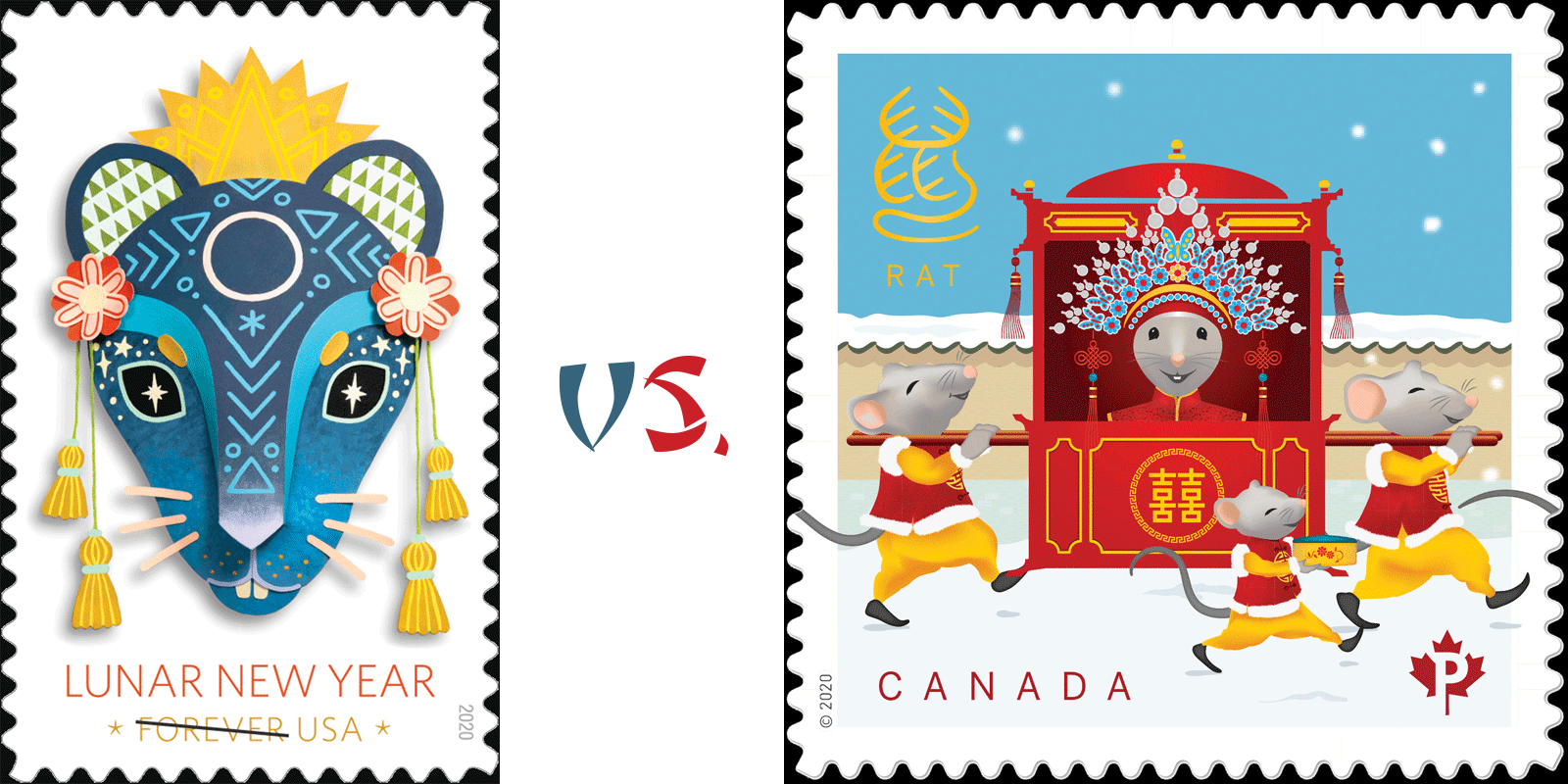[press release]
Royal Mail Marks 200th Anniversary Of The Royal Astronomical Society With A Set Of Special Stamps
- Visions of the Universe features eight illustrations of astronomical phenomena discovered or investigated by UK astronomers and astrophysicists
- Included in the set are: Cat’s Eye Nebula; Geysers on Saturn’s moon Enceladus; Pulsars; Black Holes; Jupiter’s Auroras; gravitational lensing; Comet 67P; and Cygnus A Galaxy
- Britain has a long history of astronomical investigation and discovery
- The stamps have been designed in collaboration with the Royal Astronomical Society (RAS)
- Artist, Robert Ball, has illustrated original images of each phenomena, bringing a dynamism and vibrancy to each stamp
- The RAS was conceived in January 1820 when 14 ‘gentleman astronomers’ sat down to dinner at the Freemasons’ Tavern, Lincoln’s Inn Fields, London. It is now the UK’s leading learned society for astronomy
- A full set of all eight stamps, available in a Presentation Pack, retails at £9.75
- The stamps, and a range of collectible products, can be pre-ordered now at www.royalmail.com/visionsoftheuniverse and by phone on 03457 641 641
- The stamps went on on general sale from 11 February 2020
Royal Mail has revealed images of eight new stamps being issued to mark the 200th anniversary of the Royal Astronomical Society (RAS).
The Visions of the Universe stamp issue features eight illustrations of astronomical phenomena discovered or investigated by astronomers and astrophysicists, that extol Britain’s contribution to discovery and understanding in this field.
Included in the set are: Cat’s Eye Nebula; Geysers on the moon Enceladus; Black Holes; Pulsars; Jupiter’s Auroras; gravitational lensing; Comet 67P; and the Cygnus A Galaxy.
Britain has a long and rich tradition of astronomical investigation, from the discovery of celestial objects, such as the planet Uranus by William Herschel in 1781, to pioneering observational techniques such as radio interferometry pioneered by Sir Martin Ryle in the mid-20th century.
The society began on 12 January 1820, when 14 ‘gentleman astronomers’ sat down to dinner at the Freemasons’ Tavern, Lincoln’s Inn Fields, London and conceived the idea of the Society. It now boasts a membership of more than 4,000 astronomers, known as Fellows, and it continues to encourage and promote the study of astronomy and geophysics, as well as other closely related branches of science.
As the leading learned society for astronomy in the UK, it supports public education for students, teachers, the public and media. It awards medals to recognise excellence in research and its Gold Medal is arguably the highest accolade in the astronomical world.
The stamps have been created in collaboration with the RAS.
The illustrations by artist, Robert Ball, bring a dynamism and vibrancy to each stamp ñ putting the viewer in the middle of the action – which could not have been possible with using a photograph.
Philip Diamond, RAS Executive Director, said: ìThis striking and attractive set of stamps reflects the drama of the universe around us. I’m delighted that our bicentenary year is marked by a genuine collector’s item combining tradition with contemporary science.î
Philip Parker, Royal Mail, said: “These vivid and beautiful new stamps celebrate the UK’s contribution to our understanding of the Universe, from geysers erupting from one of Saturn’s moons to the extraordinary nature of Black Holes.”
A full set of all eight stamps, available in a Presentation Pack, retails at £9.75.
The stamps and a range of collectible products are available now for pre-order at www.royalmail.com/visionsoftheuniverse and by phone on 03457 641 641.
The stamps are now available on general sale at 7,000 Post Offices across the UK, as of Tuesday 11 February.
Stamp-By-Stamp:
Cat’s Eye Nebula
The Cat’s Eye Nebula gives us a look ahead to the death of the Sun. This gas cloud is 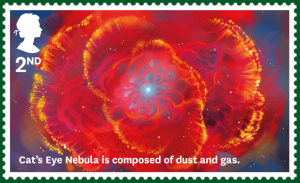 now expanding into space but was once inside a star, much like our own Sun. As the nuclear reactions that generate energy in its core were coming to an end, the uneven outflow of energy pushed the outer layers of the star off into space. The nebula was discovered by William Herschel ñ the first president of the RAS. In 1864, William Huggins used the pioneering technique of optical spectroscopy, in which light is split into an artificial rainbow and analysed, to prove that the Cat’s Eye Nebula was a tenuous gas, rather than a solid object. Huggins was awarded the prestigious Gold Medal of the Royal Astronomical Society in 1867.
now expanding into space but was once inside a star, much like our own Sun. As the nuclear reactions that generate energy in its core were coming to an end, the uneven outflow of energy pushed the outer layers of the star off into space. The nebula was discovered by William Herschel ñ the first president of the RAS. In 1864, William Huggins used the pioneering technique of optical spectroscopy, in which light is split into an artificial rainbow and analysed, to prove that the Cat’s Eye Nebula was a tenuous gas, rather than a solid object. Huggins was awarded the prestigious Gold Medal of the Royal Astronomical Society in 1867.
Geysers On Enceladus
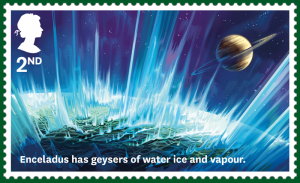 Enceladus is a small, icy moon of Saturn with a system of geysers that spray water and vapour into space. The geysers were found after the British-built magnetometer instrument on NASA’s Cassini spacecraft began sending back puzzling results indicating that Enceladus possessed a thin atmosphere. Michele Dougherty of Imperial College persuaded NASA to skim the space probe over the moon’s surface to take a closer look. In the process, the cameras revealed the geysers. Subsequent investigations have found that the geysers are fed by a subsurface ocean in which the water contains the molecular building blocks of life.
Enceladus is a small, icy moon of Saturn with a system of geysers that spray water and vapour into space. The geysers were found after the British-built magnetometer instrument on NASA’s Cassini spacecraft began sending back puzzling results indicating that Enceladus possessed a thin atmosphere. Michele Dougherty of Imperial College persuaded NASA to skim the space probe over the moon’s surface to take a closer look. In the process, the cameras revealed the geysers. Subsequent investigations have found that the geysers are fed by a subsurface ocean in which the water contains the molecular building blocks of life.
Pulsars
Pulsars are rapidly rotating neutron stars. They are incredibly dense celestial objects that squash the mass of the Sun into something just 15ñ20km across. As they rotate, they 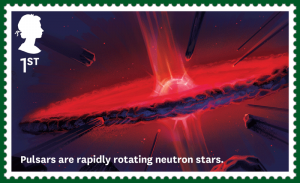 beam radiation across space like a lighthouse, sometimes many times a second. Every neutron star was once the energy-generating core of a massive star, but after exhausting its nuclear fuel supply it collapsed into an ultra-dense object, triggering the explosion of the star.
beam radiation across space like a lighthouse, sometimes many times a second. Every neutron star was once the energy-generating core of a massive star, but after exhausting its nuclear fuel supply it collapsed into an ultra-dense object, triggering the explosion of the star.
Pulsars were discovered in 1967 by British astronomers Jocelyn Bell (later Bell Burnell) and Antony Hewish. Working with a pioneering radio telescope that Hewish had designed, Bell spotted a celestial radio pulse coming from the sky every 1.3 seconds. Baffled at first by the mysterious signal, the two jokingly named it LGM-1, which stood for Little Green Men. Bell Burnell is a former President of the RAS.
Black Holes
Black holes are areas of space where the density of matter is so great that nothing can escape the gravitational pull. Their existence was first suggested in 1783 by English natural 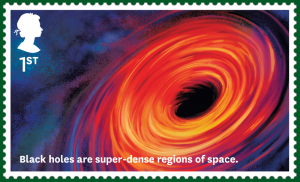 philosopher John Michell, and their behaviour was mathematically described in 1916 by the German physicist Karl Schwarzschild. Yet they seemed so unorthodox that astronomers were initially reluctant to believe they could truly exist. Only in the 1960s were black holes accepted, which led to a flurry of theoretical investigations.
philosopher John Michell, and their behaviour was mathematically described in 1916 by the German physicist Karl Schwarzschild. Yet they seemed so unorthodox that astronomers were initially reluctant to believe they could truly exist. Only in the 1960s were black holes accepted, which led to a flurry of theoretical investigations.
In 1974, Stephen Hawking made key predictions about black hole behaviour. His calculations showed that subatomic particles could escape a black hole in certain circumstances. Over long periods of time, this would lead to the black hole ‘evaporating’. As yet, no one has seen an evaporating black hole, but Hawking’s theory is widely believed. Hawking was awarded the Royal Astronomical Society’s Gold Medal in 1985. The stamp image is a simulation by University College London (Ziri Younsi), showing radiation from the disc of material around a spinning Black Hole.
Jupiter’s Auroras
Like the Earth, the giant planet Jupiter experiences auroras. On both planets, they are 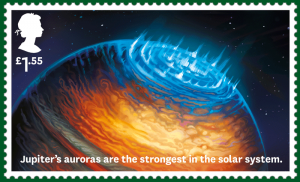 produced when charged particles accelerate into the atmosphere, giving off light as they collide with the gas atoms there. Earth’s auroras come in visible wavelengths of red and green, but at Jupiter they shine in the ultraviolet part of the spectrum and as X-rays. On Earth, powerful voltages in our magnetic field power the auroras, but this does not seem to be the case at Jupiter, where the source of power remains a mystery. A team of astronomers at the University of Leicester continues to study this phenomenon.
produced when charged particles accelerate into the atmosphere, giving off light as they collide with the gas atoms there. Earth’s auroras come in visible wavelengths of red and green, but at Jupiter they shine in the ultraviolet part of the spectrum and as X-rays. On Earth, powerful voltages in our magnetic field power the auroras, but this does not seem to be the case at Jupiter, where the source of power remains a mystery. A team of astronomers at the University of Leicester continues to study this phenomenon.
Gravitational Lensing
Gravitational lensing occurs when massive celestial objects bend light from more distant 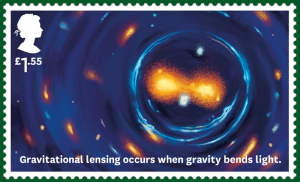 sources to form distorted and multiple images. The phenomenon was a prediction of Albert Einstein’s General Theory of Relativity. It was confirmed in 1979 when an Anglo-American team of astronomers that included Dennis Walsh and Bob Carswell discovered two distorted galaxies side by side that on closer inspection appeared to be identical. Astronomers can ‘weigh’ the amount of matter forming the gravitational lens by the appearance of the distorted images. This has shown that clusters of galaxies contain a lot more matter than can be seen. Astronomers call this invisible material ‘dark matter’.
sources to form distorted and multiple images. The phenomenon was a prediction of Albert Einstein’s General Theory of Relativity. It was confirmed in 1979 when an Anglo-American team of astronomers that included Dennis Walsh and Bob Carswell discovered two distorted galaxies side by side that on closer inspection appeared to be identical. Astronomers can ‘weigh’ the amount of matter forming the gravitational lens by the appearance of the distorted images. This has shown that clusters of galaxies contain a lot more matter than can be seen. Astronomers call this invisible material ‘dark matter’.
Comet 67p
Comet 67P/Churyumov-Gerasimenko is an icy body just 4.3km long that was explored by 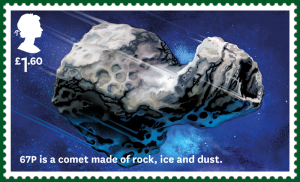 the European Space Agency’s Rosetta mission. UK industry and universities worked on the mission’s lander and instruments. We now know that 67P is an ancient object that formed before the planets, more than 4.5 billion years ago. Rosetta’s lander instruments revealed carbon-rich molecules in the ice. Such molecules could have been important in ‘seeding’ the early Earth and helping to get life started on our planet. Rosetta also showed that the comet’s two distinct lobes were once separate bodies that collided and stuck together.
the European Space Agency’s Rosetta mission. UK industry and universities worked on the mission’s lander and instruments. We now know that 67P is an ancient object that formed before the planets, more than 4.5 billion years ago. Rosetta’s lander instruments revealed carbon-rich molecules in the ice. Such molecules could have been important in ‘seeding’ the early Earth and helping to get life started on our planet. Rosetta also showed that the comet’s two distinct lobes were once separate bodies that collided and stuck together.
Cygnus A Galaxy
Cygnus A is an active galaxy, which means that something other than stars is producing a 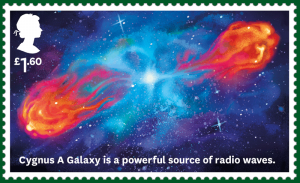 significant amount of energy within it. In the early 1950s, the Jodrell Bank radio observatory in Cheshire found that radio emission was not coming directly from Cygnus A but from a pair of radio lobes, one on either side of the visible galaxy. It is thought that energetic jets of particles are being accelerated away from the centre of the galaxy by strong magnetic fields. These particles collide with the extremely rarefied atoms in the space surrounding the galaxy, powering the radio lobes.
significant amount of energy within it. In the early 1950s, the Jodrell Bank radio observatory in Cheshire found that radio emission was not coming directly from Cygnus A but from a pair of radio lobes, one on either side of the visible galaxy. It is thought that energetic jets of particles are being accelerated away from the centre of the galaxy by strong magnetic fields. These particles collide with the extremely rarefied atoms in the space surrounding the galaxy, powering the radio lobes.

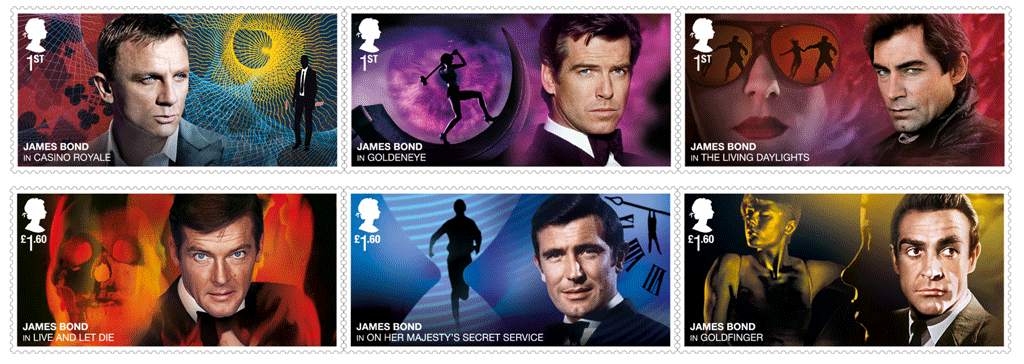
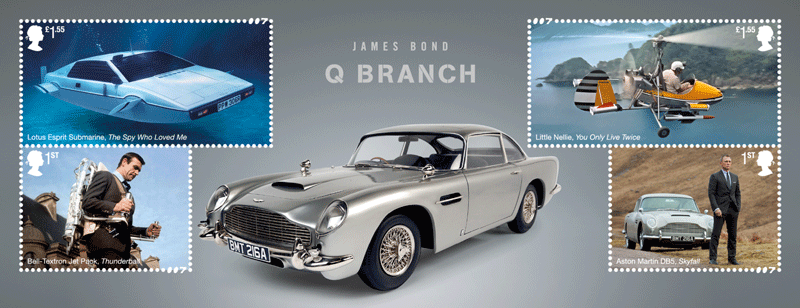
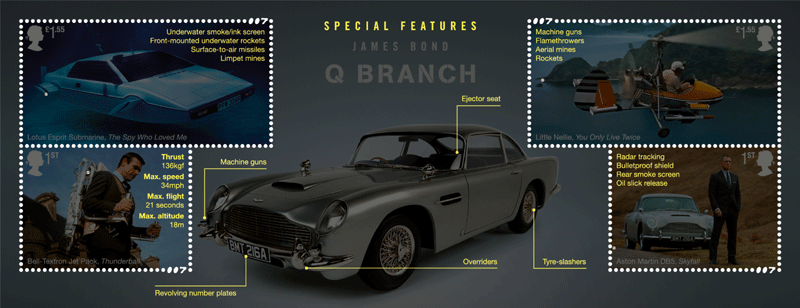
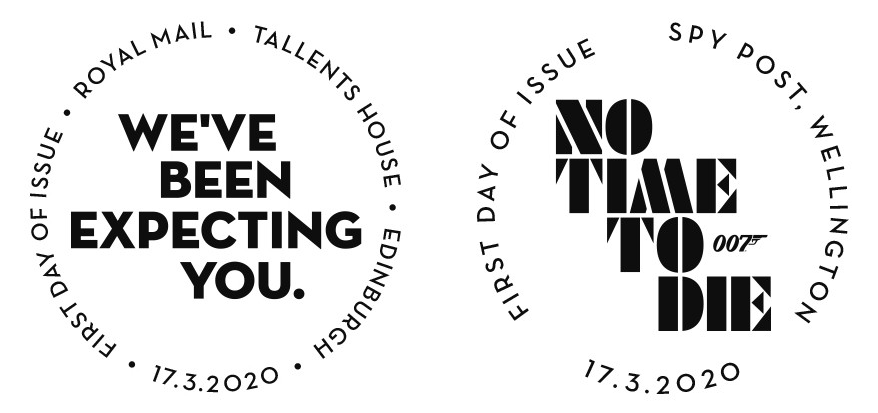
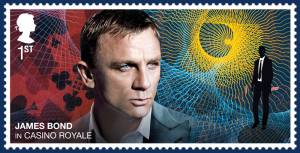 The sixth Bond (Daniel Craig) joined the series in 2006 as the producers turn to Ian Fleming’s first novel to re-imagine a harder-edged 007. Having just earned his 00 status and his licence to kill, Bond foils ruthless Le Chiffre, who uses terror attacks to manipulate the stock market. A jaw-dropping finale ends with the tragic demise of, Vesper Lynd.
The sixth Bond (Daniel Craig) joined the series in 2006 as the producers turn to Ian Fleming’s first novel to re-imagine a harder-edged 007. Having just earned his 00 status and his licence to kill, Bond foils ruthless Le Chiffre, who uses terror attacks to manipulate the stock market. A jaw-dropping finale ends with the tragic demise of, Vesper Lynd.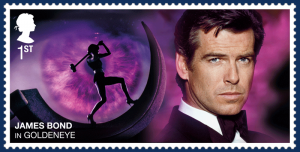 Although remaining involved, Cubby Broccoli passes on main producing responsibilities to his son and daughter, Michael G Wilson and Barbara Broccoli, who debuts in the producer’s chair. A new Bond (Pierce Brosnan) and a female M (Judi Dench) take the stage as a former agent, 006, threatens the world with a terrifying space weapon, GoldenEye.
Although remaining involved, Cubby Broccoli passes on main producing responsibilities to his son and daughter, Michael G Wilson and Barbara Broccoli, who debuts in the producer’s chair. A new Bond (Pierce Brosnan) and a female M (Judi Dench) take the stage as a former agent, 006, threatens the world with a terrifying space weapon, GoldenEye.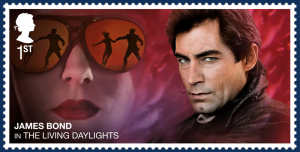 Timothy Dalton takes on the Bond mantle in this thrilling, lightning-paced adventure. The story draws inspiration from real-life East–West defections and Soviet-Afghan war in Afghanistan, as Bond defeats the ambitious Soviet General Georgi Koskov and a rogue US arms dealer called Whitaker.
Timothy Dalton takes on the Bond mantle in this thrilling, lightning-paced adventure. The story draws inspiration from real-life East–West defections and Soviet-Afghan war in Afghanistan, as Bond defeats the ambitious Soviet General Georgi Koskov and a rogue US arms dealer called Whitaker.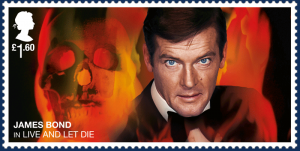 In Roger Moore’s first film as James Bond, 007 travels to Harlem, New Orleans and the Caribbean to investigate the mysterious Dr Kananga, known as Mr Big. Bond saves the day during a voodoo ritual and the stunt team sets a world record for a speedboat jump.
In Roger Moore’s first film as James Bond, 007 travels to Harlem, New Orleans and the Caribbean to investigate the mysterious Dr Kananga, known as Mr Big. Bond saves the day during a voodoo ritual and the stunt team sets a world record for a speedboat jump.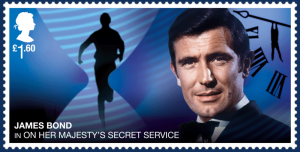 The film-makers unveil a new Bond (George Lazenby) and the adventurous Tracy Di Vicenzo (Diana Rigg) in a story that sees Bond marry. SPECTRE is bidding to blackmail world powers via biological warfare. Bond defeats Blofeld but is left devastated when his bride, Tracy, is gunned down on their wedding day.
The film-makers unveil a new Bond (George Lazenby) and the adventurous Tracy Di Vicenzo (Diana Rigg) in a story that sees Bond marry. SPECTRE is bidding to blackmail world powers via biological warfare. Bond defeats Blofeld but is left devastated when his bride, Tracy, is gunned down on their wedding day.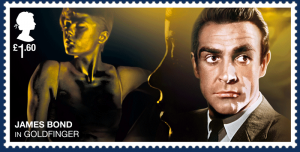 The third film starring Sean Connery introduces the iconic Aston Martin DB5, which combines ingenious gadgetry with understated elegance. The story sees Bond track gold smuggler, Auric Goldfinger, dodging death in the form of Oddjob, as well as a terrifying laser beam. Bond, with the help of Pussy Galore, foils a bid to render Fort Knox worthless.
The third film starring Sean Connery introduces the iconic Aston Martin DB5, which combines ingenious gadgetry with understated elegance. The story sees Bond track gold smuggler, Auric Goldfinger, dodging death in the form of Oddjob, as well as a terrifying laser beam. Bond, with the help of Pussy Galore, foils a bid to render Fort Knox worthless.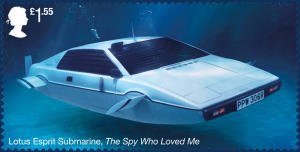 Lotus Esprit Submarine – The Spy Who Loved Me (1977)
Lotus Esprit Submarine – The Spy Who Loved Me (1977)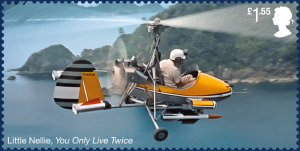 Little Nellie – You Only Live Twice (1967)
Little Nellie – You Only Live Twice (1967)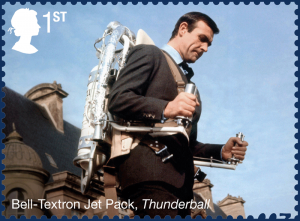 Bell-Textron Jet Pack – Thunderball (1965)
Bell-Textron Jet Pack – Thunderball (1965) Aston Martin DB5 – Skyfall (2012)
Aston Martin DB5 – Skyfall (2012)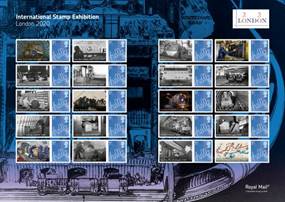 Royal Mail will celebrate London 2020 with a selection of special items that recall the worldís first adhesive postage stamps, the Penny Black, Twopenny Blue and Penny Red.
Royal Mail will celebrate London 2020 with a selection of special items that recall the worldís first adhesive postage stamps, the Penny Black, Twopenny Blue and Penny Red.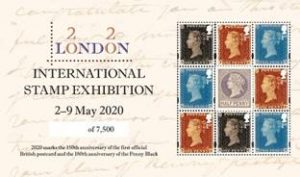 Ahead of the exhibition opening, a retail stamp booklet will be issued on 10 March. Containing two each of the Penny Black, Twopenny Blue and Penny Red designs, the inside of the booklet includes the official London 2020 logo. The stamps in this booklet are self-adhesive.
Ahead of the exhibition opening, a retail stamp booklet will be issued on 10 March. Containing two each of the Penny Black, Twopenny Blue and Penny Red designs, the inside of the booklet includes the official London 2020 logo. The stamps in this booklet are self-adhesive.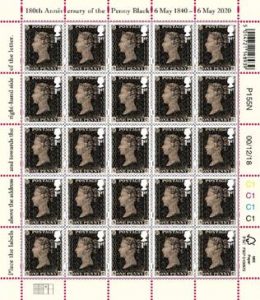 can be experienced as part of the attractions at The Postal Museum in London.
can be experienced as part of the attractions at The Postal Museum in London.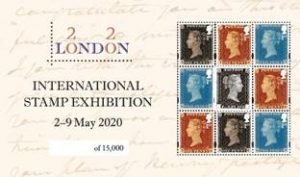 stamp design that appeared on the first postcard, while the sheet itself will carry an ëanniversaryí text. This sheet will be available in a numbered edition of 7,500.
stamp design that appeared on the first postcard, while the sheet itself will carry an ëanniversaryí text. This sheet will be available in a numbered edition of 7,500.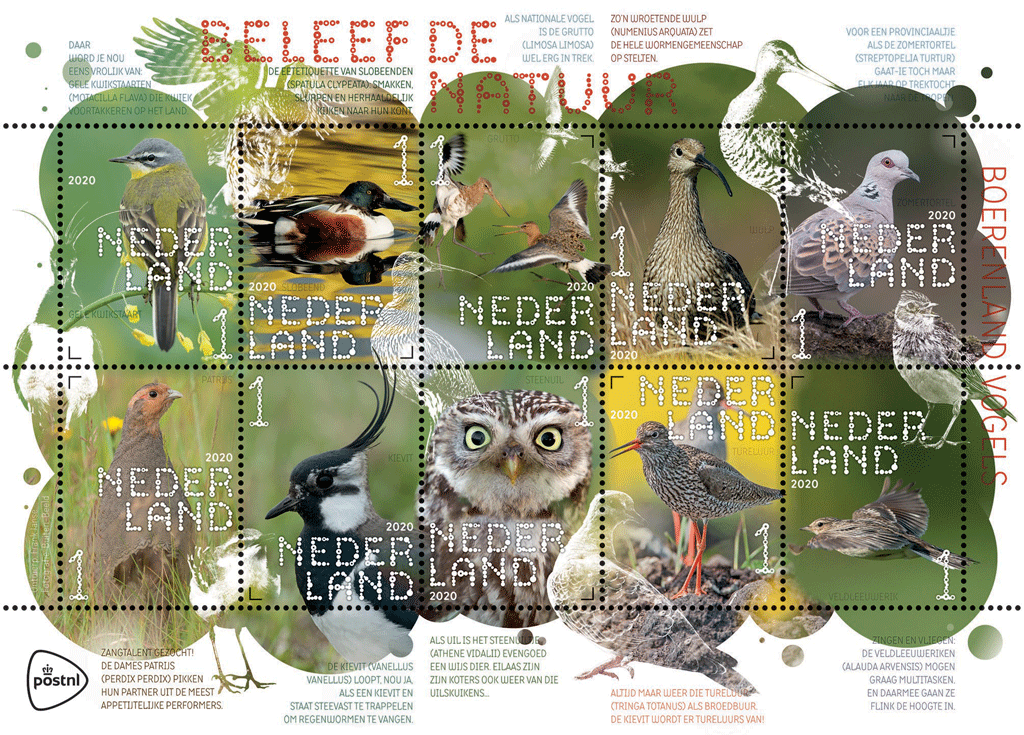
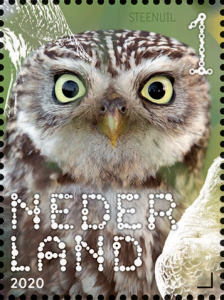 The consequence of this for the farmland birds is far-reaching, says Resi Becker, director of Mail NL at PostNL. “In half a century, 60% of these birds have disappeared in our country. The Netherlands currently has around 70 species of farmland birds. We must handle this with care. That is why PostNL is supporting the efforts of Bird Protection Netherlands to protect all wild birds and their habitats as well as possible by issuing these stamps.”
The consequence of this for the farmland birds is far-reaching, says Resi Becker, director of Mail NL at PostNL. “In half a century, 60% of these birds have disappeared in our country. The Netherlands currently has around 70 species of farmland birds. We must handle this with care. That is why PostNL is supporting the efforts of Bird Protection Netherlands to protect all wild birds and their habitats as well as possible by issuing these stamps.”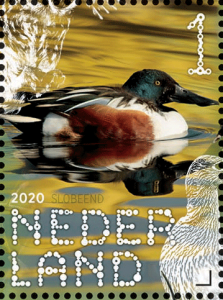 partridge, lapwing, little owl, redshank and skylark. Of the 10 farmland birds on the stamps, only the 2 bellowing godwits and the skylark can be seen in the sky. The other birds are depicted standing, sitting or swimming. Janse: “That has to do with the fact that farmland birds are generally somewhat smaller and therefore more difficult to recognize when they fly. More importantly, I wanted to create a nice balance. With birds that takes different positions and look at different sides. ”
partridge, lapwing, little owl, redshank and skylark. Of the 10 farmland birds on the stamps, only the 2 bellowing godwits and the skylark can be seen in the sky. The other birds are depicted standing, sitting or swimming. Janse: “That has to do with the fact that farmland birds are generally somewhat smaller and therefore more difficult to recognize when they fly. More importantly, I wanted to create a nice balance. With birds that takes different positions and look at different sides. ”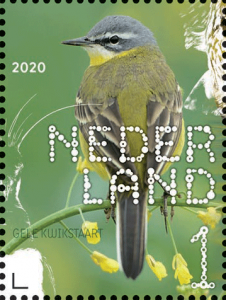 and orange. “The latter especially comes back nicely in the long legs of redshank, in the partridge’s part, the belly of the shoveler, and the necks of the two bald-tailed godwits. That was also a consideration to make the title orange this time. ”
and orange. “The latter especially comes back nicely in the long legs of redshank, in the partridge’s part, the belly of the shoveler, and the necks of the two bald-tailed godwits. That was also a consideration to make the title orange this time. ”


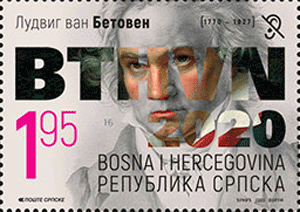 The Republic of Srpska – Bosnia and Herzegovina is issuing a stamp January 29th to commemorate the 250th anniversary of the birth of Ludwig van Beethoven. According to the Enterprise of Postal Traffic, the eight stamps on a sheet have a denomination of 1,95 KM or 1 euro. There is also an official FDC.
The Republic of Srpska – Bosnia and Herzegovina is issuing a stamp January 29th to commemorate the 250th anniversary of the birth of Ludwig van Beethoven. According to the Enterprise of Postal Traffic, the eight stamps on a sheet have a denomination of 1,95 KM or 1 euro. There is also an official FDC.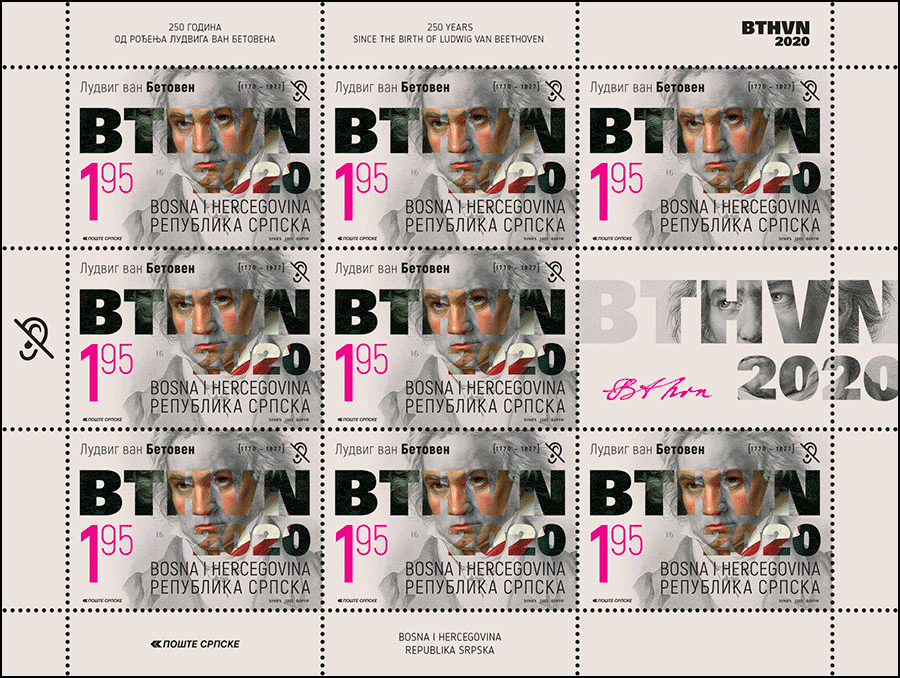
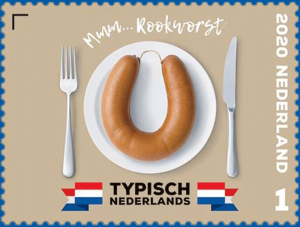 In the new Typisch Nederlands stamp series, PostNL issued stamps on 2 January, on which the popular smoked sausage plays the leading role. In our country we eliminate tens of millions of smoked sausages every year. Hand-made or with typical Dutch dishes, such as pea soup or kale stew or sauerkraut.
In the new Typisch Nederlands stamp series, PostNL issued stamps on 2 January, on which the popular smoked sausage plays the leading role. In our country we eliminate tens of millions of smoked sausages every year. Hand-made or with typical Dutch dishes, such as pea soup or kale stew or sauerkraut.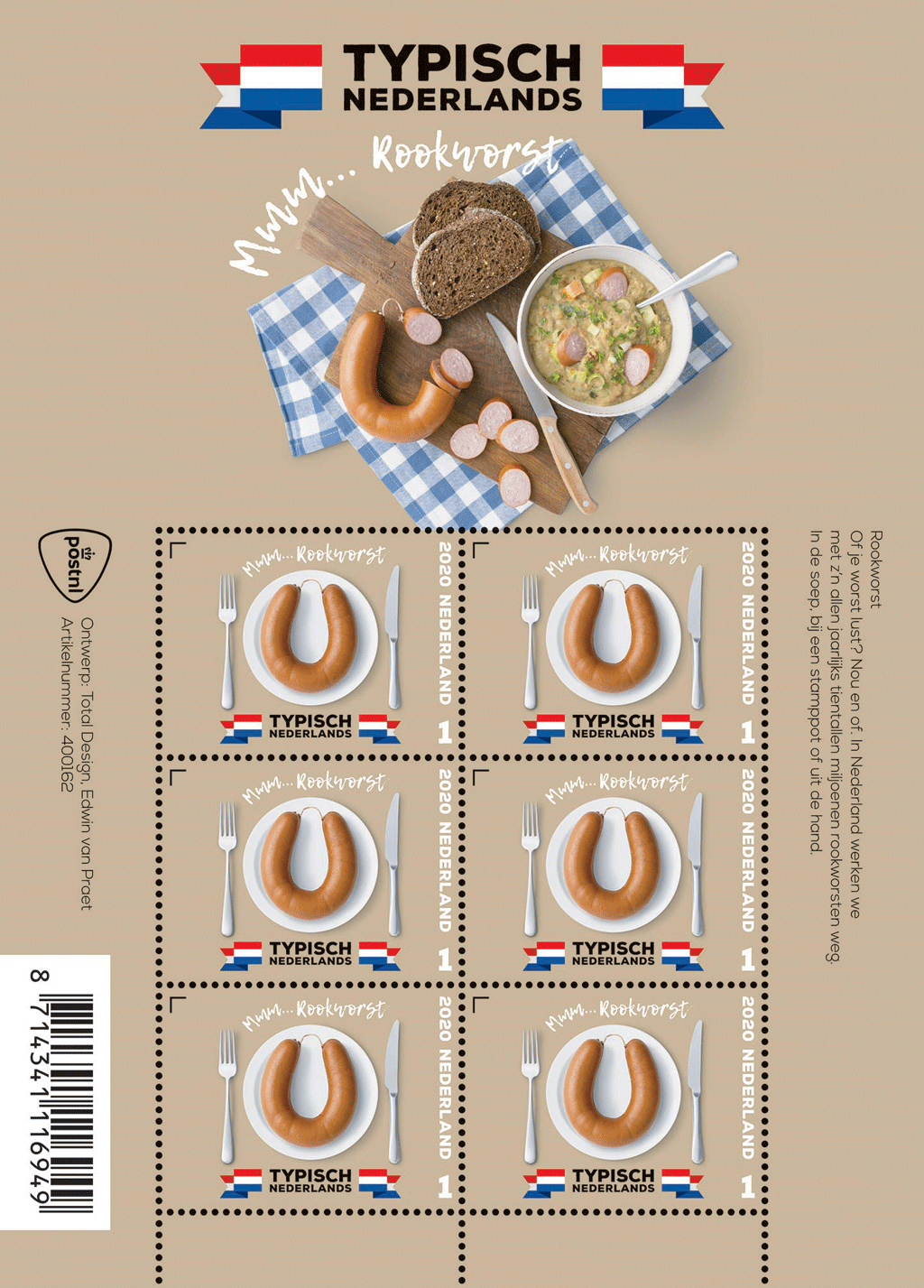
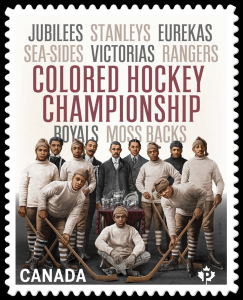 HALIFAX, N.S. – Canada Post today unveiled a stamp honouring the Colored Hockey Championship and the all-Black hockey teams in the Maritimes that competed for it between 1895 and the early 1930s.
HALIFAX, N.S. – Canada Post today unveiled a stamp honouring the Colored Hockey Championship and the all-Black hockey teams in the Maritimes that competed for it between 1895 and the early 1930s.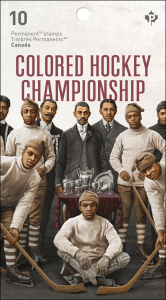 The stamp acknowledges some of the game’s early developments, including some of the earliest recorded uses of down-to-the-ice goaltending, which was later adopted by players in “white-only” leagues, including professional leagues. At that time, hockey goalies in other leagues stood upright. [Booklet cover shown on left.]
The stamp acknowledges some of the game’s early developments, including some of the earliest recorded uses of down-to-the-ice goaltending, which was later adopted by players in “white-only” leagues, including professional leagues. At that time, hockey goalies in other leagues stood upright. [Booklet cover shown on left.]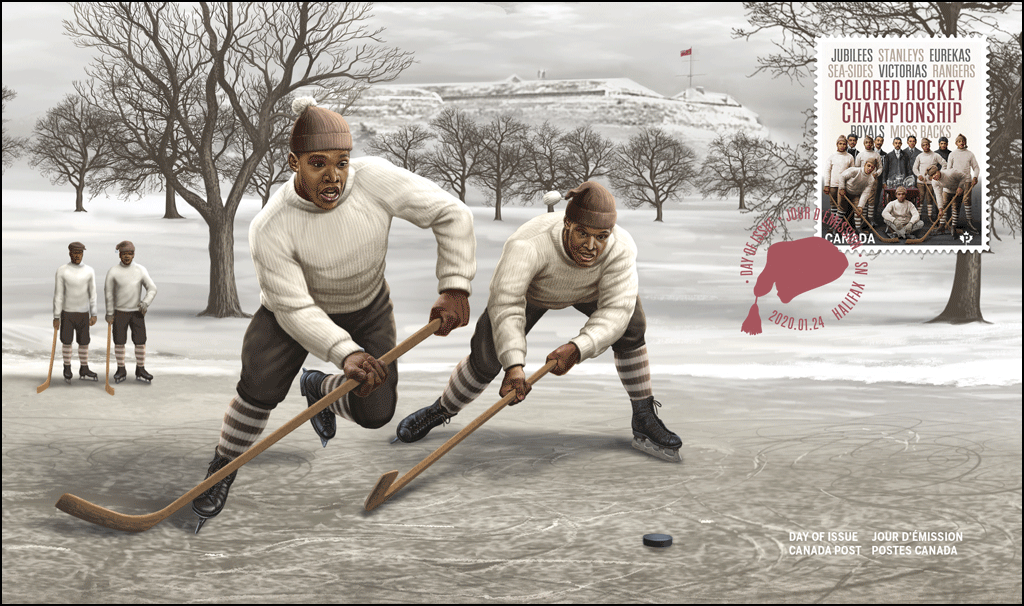 Canada Post is proud to honour the courage of those who organized and played all-Black hockey and helped to make this little-known story part of Canada’s national discussion.
Canada Post is proud to honour the courage of those who organized and played all-Black hockey and helped to make this little-known story part of Canada’s national discussion. 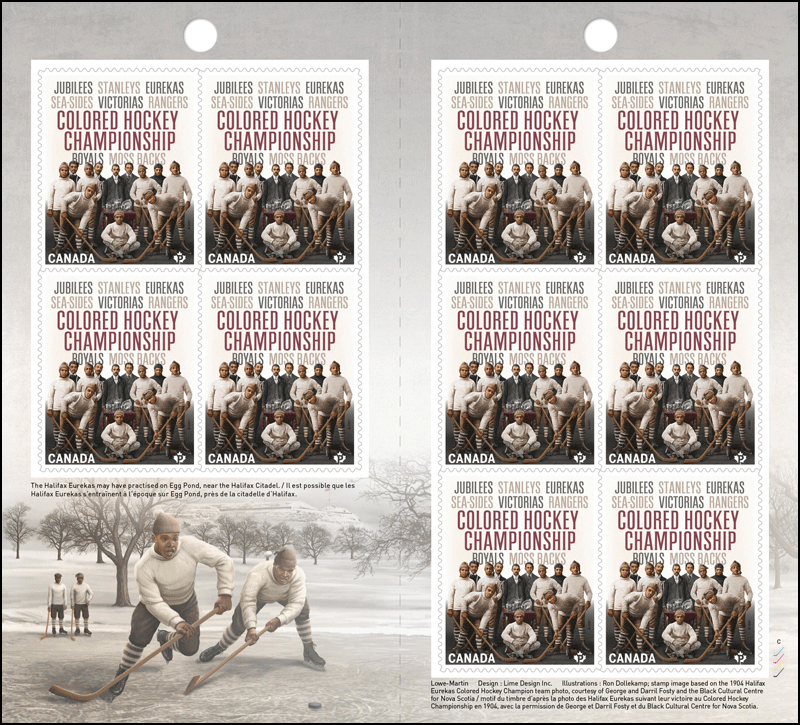
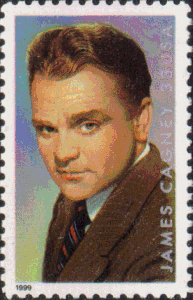 “You dirty rat!*”
“You dirty rat!*”